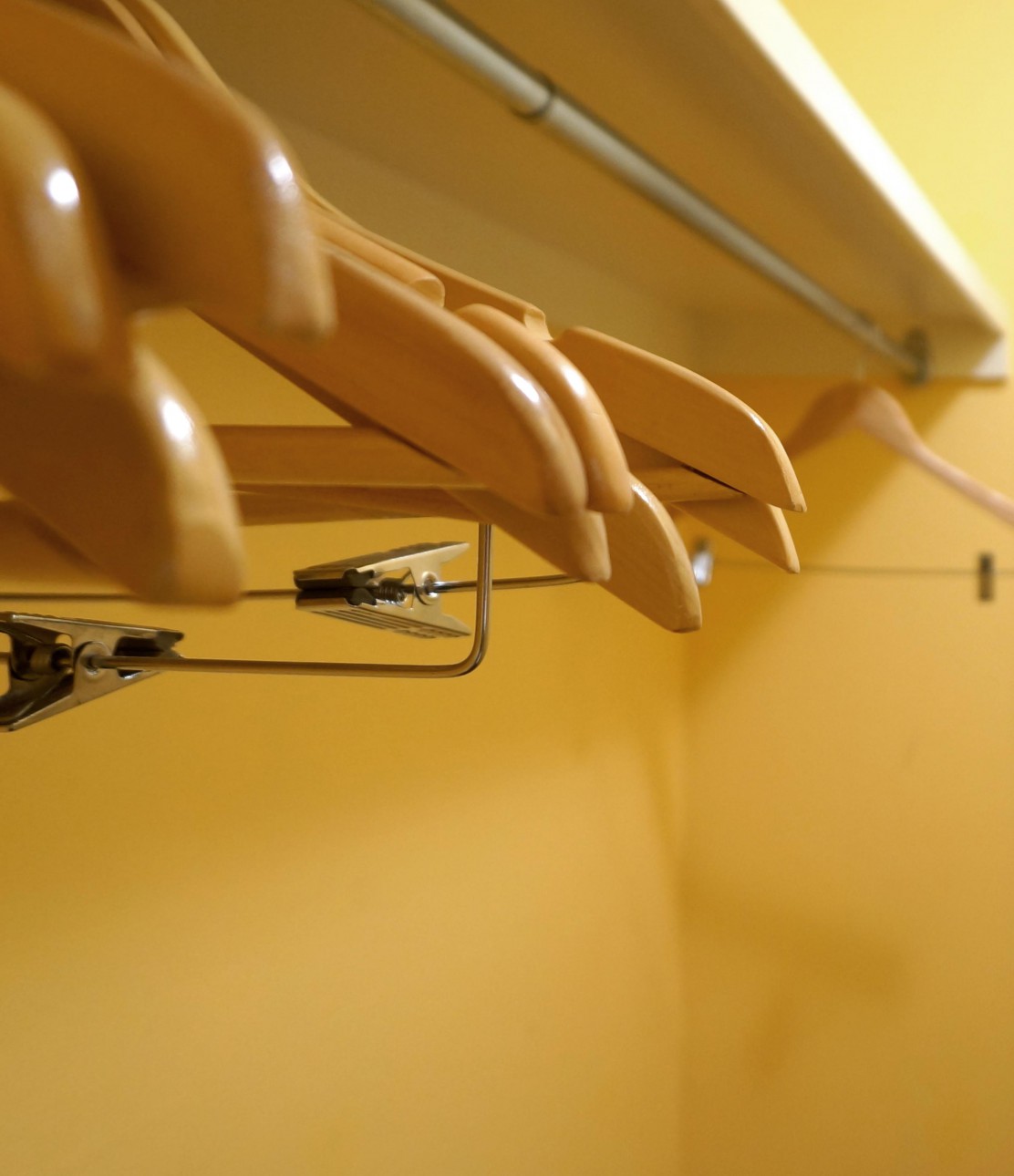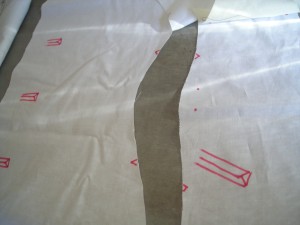So, I obviously need an FBA here. Those are some major wrinkles coming from the sides and armscye.
I’m wearing the muslin over a fairly bulky sweater, but that was deliberate. I wanted to see how the jacket would close over a thicker layer. It’s fine through the waist and hips, not so good over the bust. One of the great things about a fitting muslin is that you can draw right on it. I used a green highlighter to mark the two deepest wrinkles, which is where the FBA will have to be made. If you look near the seam on the right, it’s easier to see the markings.
This means it’s back to the pellon tracing I made of this pattern piece. I’ll add a dart to that area, remove this panel from the muslin, and replace it with the darted/FBA new piece. Also, I think the jacket is too long overall, too, so I’m going to shorten the sleeves and hem while I’m at it. I’d like it to hit right at the knee, and now, it’s probably two inches below that point. It occurs to me that if I add some hidden closures below the waist, this piece can pull double duty as a coatdress of sorts. Debating that now. I think it would be a cool dress, but I don’t know if I would wear it as a dress, you know?
Theresa














